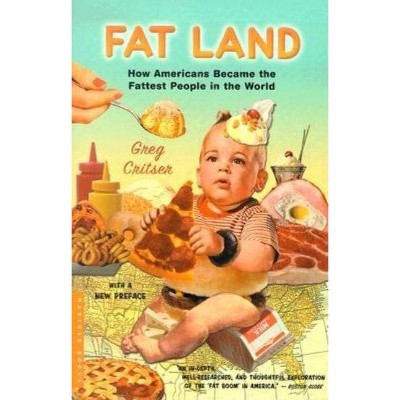Nutraceuticals and Cancer Signaling - (Food Bioactive Ingredients) by Seid Mahdi Jafari & Seyed Mohammad Nabavi & Ana Sanches Silva (Hardcover)

Similar Products
Products of same category from the store
AllProduct info
<p/><br></br><p><b> Book Synopsis </b></p></br></br><p><b>Part I: An overview of cancer and its mechanisms</b></p> <p>Chapter 1. <b>Cancer overview</b> (impact of cancer worldwide, main causes of cancer, most common types of cancer, main treatments) (Seyed/Ana)</p> <p>Chapter 2. <b>Mechanisms involved in carcinogenesis</b> (e.g. apoptosis) (Devi)</p> <p><b>Part II: Functional foods/nutraceuticals as chemopreventive agents</b></p> <p>(identification of molecular targets of nutraceuticals; synthetic analogues of chemopreventive agents, clinical trials already performed)</p> <p>Chapter 3. <b>Tomato</b> (lycopene and β-carotene) (Monica Rosa)</p> Chapter 4. <b>Aromatic plants</b> (essential oils) (Tarun)<p></p> <p>Chapter 5. <b>Bee propolis</b> (caffeic acid phenethyl ester) (Kamal)</p> <p>Chapter 6. <b>Brown algae</b> (fucoxanthin) (Muhammad Ajmal)</p> <p>Chapter 7. <b>Cruciferous vegetables</b> (indole-3-carbinol, Isothiocyanates) (Luigi)</p> <p>Chapter 8. <b>Crustacea</b> (carotenoids namely astaxanthin) (Renald)</p> <p>Chapter 9. <b>Curcuma</b> (curcumin) (Kamal)</p> <p>Chapter 10. <b>Fruits and vegetables</b> (flavonoids, namely quercetin and resveratrol; dietary fibers, carotenoids) (Davide)</p> <p>Chapter 11. <b>Garlic</b> (allylsulfur compounds) (Ipek)</p> <p>Chapter 12. <b>Ginger</b> (gingerols and 6-shogaol) (Sinem)</p> <p>Chapter 13. <b>Saffron</b> (crocin) (Mahdi)</p> <p>Chapter 14. <b>Olive leaf</b> (oleuropein) (Mahdi)</p> <p>Chapter 15. <b>Honey</b> (Fazlullah)</p> <p>Chapter 16. <b>Soybeans and phyto-estrogen rich foods</b> (genistein, daidzein) (Azadeh)</p> <p>Chapter 17. <b>Tea</b> (catechins including (-)-epigallocatechin-3-gallate) (Hari)</p> <p>Chapter 18. <b>Yoghurt and fermented foods</b> (probiotics) (Roja)</p> <p><b>Part III: The role of nutrients in the prevention of cancer</b></p> <p>Chapter 19. <b>Vitamins</b> (namely C, D, E) (Mirele)</p> <p>Chapter 20. <b>Minerals</b> (namely selenium) (Antoni)</p> <p>Chapter 21. <b>Dietary fibers/beta-glucan</b> (Maria)</p> <p>Chapter 22. <b>Omega-3 fatty acids</b> (Dunja)</p><p/><br></br><p><b> From the Back Cover </b></p></br></br><p>Today's consumers are looking for food products with health-promoting roles in addition to nutritional benefits. With current research showing that nutraceuticals and functional foods rich in specific bioactives may have chemopreventative effects, these products are increasingly popular. However, while much in the literature supports the health-promoting features of these foods, few texts focus on their bioactive agents and their mode of action in cancer signaling.</p><p><i>Nutraceuticals and Cancer Signalling: Clinical Aspects and Mode of Action </i>explains the link between nutraceuticals and cancer in terms of clinical trials and modes of action. This book gives an overview of common cancers and their mechanisms, and the most common functional foods and their bioactive components. Individual chapters focus on specific functional foods--including tomatoes, garlic, honey, tea, yoghurt, and many more--their prominent bioactive compounds, and their mode of action in cancer signaling and chemoprevention. Recent findings on cancer-prevention roles of different vitamins and minerals are also discussed.</p><p>For food scientists, nutritionists, and pharmaceutical experts looking to understand how functional foods can play a role in fighting cancer, this text serves as a one-stop reference.</p><br><p></p><p></p><p/><br></br><p><b> About the Author </b></p></br></br><p><b>Prof. Seid Mahdi Jafari</b> received his PhD in Food Process Engineering from the University of Queensland (Australia), in 2006. He has been working on the nanoemulsification and nanoencapsulation of food bioactive ingredients for the past 15 years. Now, as a full Professor, he is an academic member of GUASNR (Iran) and Adjunct Prof. in UVigo (Spain). He has published more than 290 papers in top-ranked International Food Science Journals (h-index=58 in Scopus) and 60 book chapters along with editing 36 books with Elsevier, Springer, and Taylor & Francis. </p> <p>In Nov, 2015, he was awarded as one of the top 1% world scientists by Thomson Reuters (Essential Scientific Indicators) in the field of Biological Sciences. In Dec, 2017, he was selected as one of the top national researchers by the Iranian Ministry of Science, Research, and Technology. He has been awarded as one of the world's highly cited researchers by Clarivate Analytics (Web of Science), in Nov, 2018, 2019 and 2020; and a top reviewer in the field of agricultural and biological sciences by Publons (Sep, 2018 and 2019).</p> <p>Seyed Mohammad Nabavi is a Senior Scientist at Baqiyatallah University of Medical Sciences. </p> <p>Ana Sanches Silva is a researcher at the National Institute for Agricultural and Veterinary Research (INIAV) in Vila do Conde, Portugal.</p>
Price History
Cheapest price in the interval: 249.99 on November 8, 2021
Most expensive price in the interval: 249.99 on December 20, 2021
Price Archive shows prices from various stores, lets you see history and find the cheapest. There is no actual sale on the website. For all support, inquiry and suggestion messagescommunication@pricearchive.us




















